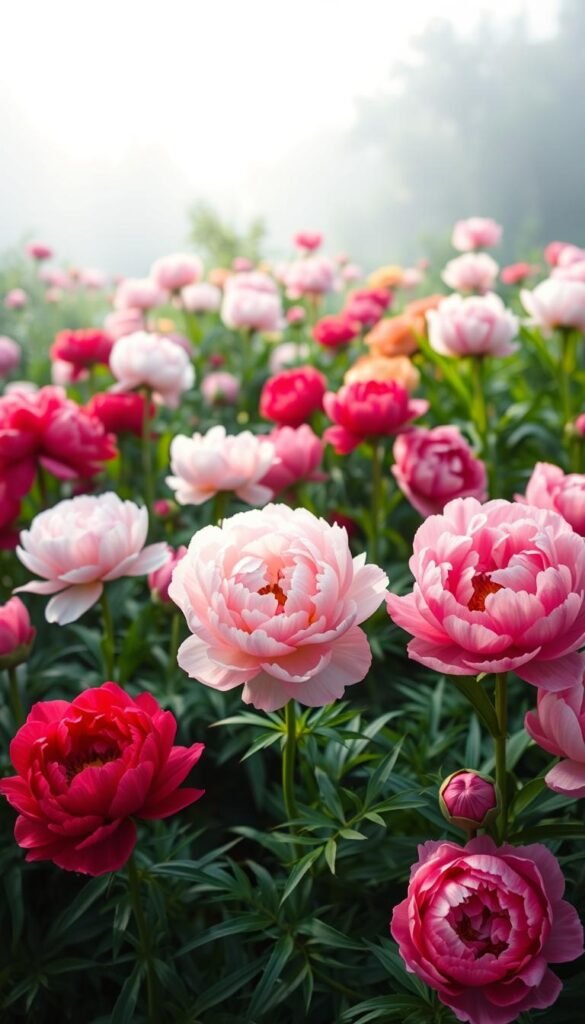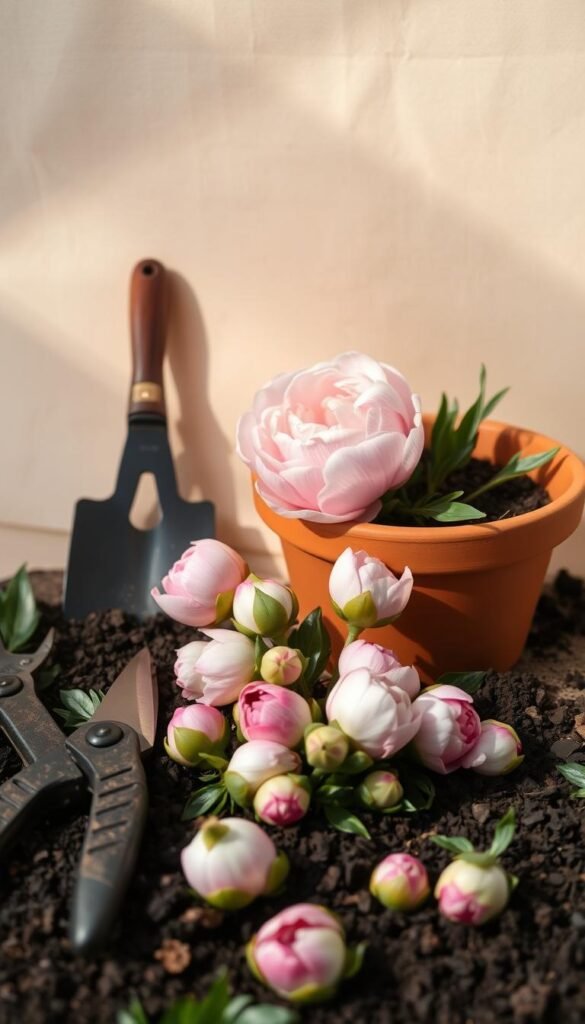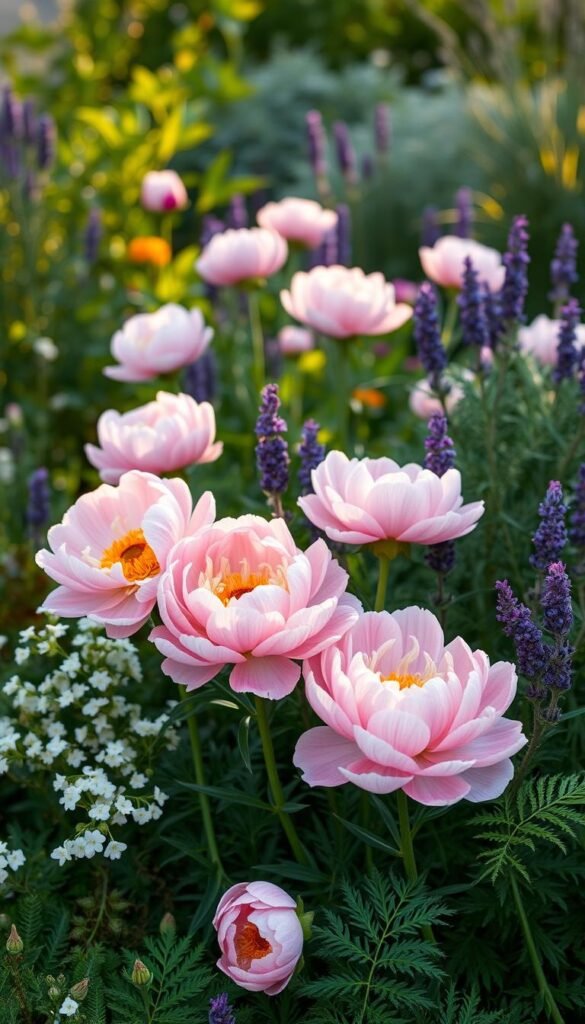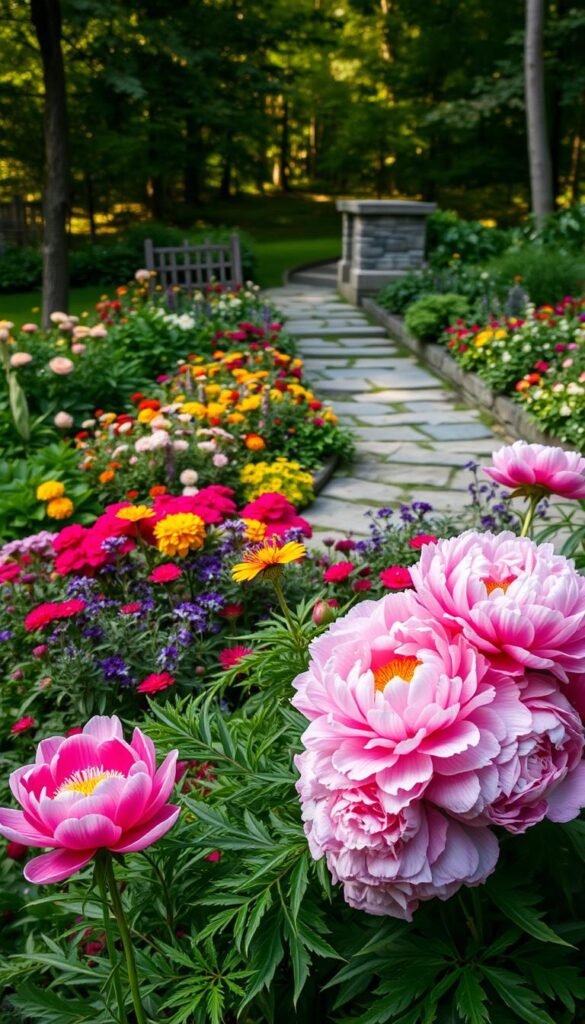Imagine stepping into a space bursting with color and texture, where every bloom feels like a celebration. Some plants simply command attention, blending elegance with effortless charm. Their lush petals and vibrant hues make them a favorite for creating breathtaking outdoor displays that evolve beautifully year after year.
Why do these perennials earn such devotion? For starters, their spectacular blossoms act as natural focal points, anchoring your landscape with reliable structure. They thrive in beds or containers, adapting seamlessly to your vision. With proper placement, they grow more striking with age—like living heirlooms in your personal oasis.
But their magic doesn’t stop there. Pair them thoughtfully with other species, and you’ll craft layers of interest that shift from spring through summer. Timing blooms, mixing heights, and balancing colors turns your yard into a dynamic canvas. It’s about harmony—not just individual beauty.
This guide walks you through every step: choosing varieties that suit your climate, mastering simple care routines, and selecting partners that elevate their appeal. Whether you’re refining an existing space or starting fresh, you’ll find inspiration to create something truly extraordinary.
Discovering the Allure of Peony Blooms

There’s something timeless about watching tight buds unfurl into voluminous blossoms that seem to defy gravity. These showstoppers have graced royal gardens and cottage plots alike, earning their place as symbols of prosperity and romance through the ages.
Understanding the Beauty and History
For over 2,000 years, these perennials have captivated cultures worldwide. Chinese emperors prized them for their medicinal properties, while Victorian gardeners adored their dramatic presence. Today’s varieties still carry that legacy—whether you choose frilly doubles resembling tutus or sleek singles with sun-kissed centers.
Seasonal Drama in Your Backyard
Their brief but breathtaking display—usually 7-10 days—creates anticipation each spring. Colors shift as blooms mature: coral buds might blush pink, while white varieties develop golden undertones. This transformation lets you enjoy multiple looks from the same plant.
Smart gardeners use this seasonal rhythm to their advantage. Early bloomers extend spring’s color parade, while late varieties bridge the gap into summer. Pair them with tulips for a spring crescendo or hydrangeas for summer continuity.
Focusing on Cultivars: Varieties and Their Benefits
With countless options available, choosing the right cultivars transforms your space into a personalized masterpiece. Each brings unique traits that enhance your landscape’s character while thriving in your specific climate.
Popular Varieties and Their Features
‘Sarah Bernhardt’ steals hearts with soft pink petals and a sweet fragrance, perfect for late spring shows. Pair it with purple salvias for a dreamy contrast. Bold reds like ‘Buckeye Belle’ and ‘Red Charm’ pop against golden sweet alyssum, creating fiery focal points.
Darker options add mystery—think ‘Kansas’ or ‘Chocolate Soldier’. Their deep maroon hues shine beside silvery artemisia. Bloom times vary too: mix early, mid, and late-season picks for six weeks of color.
Choosing Your Ideal Match
Consider mature sizes—some stay compact, while others stretch to 3 feet wide. Check sunlight needs: most crave 6+ hours daily, but tree types tolerate partial shade.
Soil matters! Well-draining earth prevents root rot. For pollinators, pick single-petaled forms. Want drama? Go for fluffy doubles. Your local nursery can recommend varieties suited to your zone’s winters and summers.
Nurturing Your Peony Garden: Care and Maintenance Essentials

Healthy growth starts with smart groundwork. These resilient perennials reward thoughtful preparation with decades of lush blooms, but their needs differ from typical garden favorites.
Soil Preparation, Watering, and Sun Requirements
Well-drained earth is non-negotiable. Mix 2-4 inches of compost into planting areas to improve texture. Avoid low spots where water pools—root rot develops quickly in soggy conditions.
| Soil Amendment | Purpose | Application |
|---|---|---|
| Compost | Enhances drainage | Mix into top 12″ |
| Pea gravel | Prevents compaction | Layer at base |
| Leaf mold | Boosts nutrients | Top-dress annually |
Morning sun with afternoon shade works best in hot climates. “Six hours of light keeps blooms coming, but shield them from scorching midday rays,” advises Oregon grower Lila Matthews. Water deeply twice weekly—more during heat waves.
Pruning and Seasonal Maintenance Techniques
Remove spent flowers immediately to redirect energy. In fall, cut stems to 3 inches after frost. Never bury the crown when mulching—use straw 2 inches away from base.
“Ants on buds? They’re harmless pollinators! Wipe them gently if they bother you.”
Watch for gray mold (botrytis). Improve air circulation and remove affected leaves promptly. Apply copper fungicide sparingly if issues persist.
Peony Flower Garden Must-Haves: Cultivars, Care, and Companion Plants

The right plant partnerships can transform solitary beauty into a cohesive masterpiece. Thoughtful pairings add depth to your landscape while solving practical challenges like bloom gaps or visual monotony.
How Neighboring Flora Enhance Visual Impact
Ask yourself: “Do I want fireworks or a symphony?” Simultaneous blooms create explosive color moments, while staggered flowering maintains interest. Early bloomers like bleeding hearts fade as peonies peak, then daylilies take over summer.
Structure matters too. Spiky salvias add vertical lines against rounded blossoms. Silver-leaved artemisia makes pink varieties glow, while dark heucheras intensify white petals. It’s about creating conversations between plants.
Crafting Depth Through Tactile Contrasts
Juxtapose bold peony leaves with feathery astilbes or wispy grasses. This textural play catches light differently throughout the day. For color harmony, try analogous schemes—coral peonies with apricot roses.
Want drama? Pair crimson blooms with yellow coreopsis. “Contrast isn’t just color,” notes designer Elena Carter. “It’s matte versus glossy leaves, upright forms beside spreading habits.”
“Gardens should tell stories. Each plant relationship reveals new chapters in your landscape’s narrative.”
Top Companion Plants to Pair with Peonies

Great gardens thrive on teamwork. Just like a well-rehearsed orchestra, the right combinations create harmony that outshines any solo act. Let’s explore partners that amplify your garden’s rhythm while solving practical challenges like bloom gaps or visual flatness.
Annual and Perennial Options for Vibrant Blooms
Alliums kick off the show with purple pom-poms that rise above emerging foliage. As their leaves yellow, peony growth conceals them perfectly. For ground-level charm, sweet alyssum spills over edges with honey-scented clouds.
Annabelle hydrangeas offer dual benefits—lush greenery during peak season, then snowball blooms afterward. Clematis vines climb trellises nearby, weaving vertical textures through your design. Match bloom times or stagger them for nonstop color.
Balancing Plant Height and Foliage for Visual Interest
Delphiniums tower behind your blooms, their spires echoing petal hues. In shadier spots, hostas unfold broad leaves that contrast beautifully with rounded forms. Their height variations create natural layers that guide the eye upward.
Daylilies step in as peonies bow out, offering grassy fronds and summer blossoms. “Think of foliage as the supporting cast,” suggests Maryland gardener Rosa Nguyen. “Their textures keep the scene lively even between flower acts.”
Designing a Layered and Vibrant Garden Bed

Transform your outdoor space into a living tapestry by playing with elevation and timing. Strategic layering turns flat plots into multidimensional displays where every plant enhances its neighbors. It’s about balancing bold statements with subtle supporting acts.
Creating Contrast with Foliage and Bloom Timing
Start with low-growing ground covers that anchor your design. Creeping Jenny spills golden leaves around stems, doubling as moisture-locking mulch. Pair it with silvery Snow in Summer—their velvety texture makes deeper petal colors pop.
Stagger bloom times for nonstop drama. Early spring bulbs fade just as your main stars take center stage. Late-summer bloomers like asters then extend the show. This rhythm keeps beds lively for months.
| Ground Cover | Features | Benefits |
|---|---|---|
| Creeping Jenny | Golden foliage | Suppresses weeds, retains moisture |
| Snow in Summer | Silver leaves | Highlights dark blooms |
| Sweet Woodruff | Fragrant white flowers | Thrives in shade |
Using Groundcovers and Spikes for a Dynamic Layout
Add vertical spikes between rounded forms. Salvia’s upright blooms create height contrast, while lavender adds fragrant structure. These spires guide the eye upward, breaking up low spreads.
Mix leaf textures too. Feathery grasses soften broad peony foliage, while heuchera’s ruffled leaves add whimsy. “A garden should surprise you at every glance,” says Colorado designer Marco Reyes. “Let textures whisper secrets between blooms.”
Integrating Companion Plants for Pest Control and Pollinator Attraction
A thriving garden isn’t just about beauty—it’s a carefully balanced ecosystem. Strategic pairings help protect your prized blooms while inviting nature’s helpers to work their magic.
Natural Pest Management Through Strategic Pairings
Marigolds act as bodyguards, repelling nematodes with their earthy scent. Garlic chives planted nearby deter aphids without harsh chemicals. These companion planting choices create invisible shields around vulnerable stems.
Nasturtiums lure hungry caterpillars away from tender foliage. Their bright flowers become sacrificial traps, preserving your display’s health. It’s teamwork at its finest—nature handling the heavy lifting.
Drawing Beneficial Insects With Fragrant and Colorful Partners
Lavender and catmint are pollinator magnets, buzzing with bees by midday. Their purple spikes contrast beautifully with softer forms, adding structure to beds. This diversity ensures pollinators visit often, boosting bloom production.
For nighttime allies, plant moonflowers. Their luminous white blossoms attract moths that prey on cutworms. Pair them with evening primroses for a fragrant dusk-to-dawn show that supports your garden’s ecosystem.






